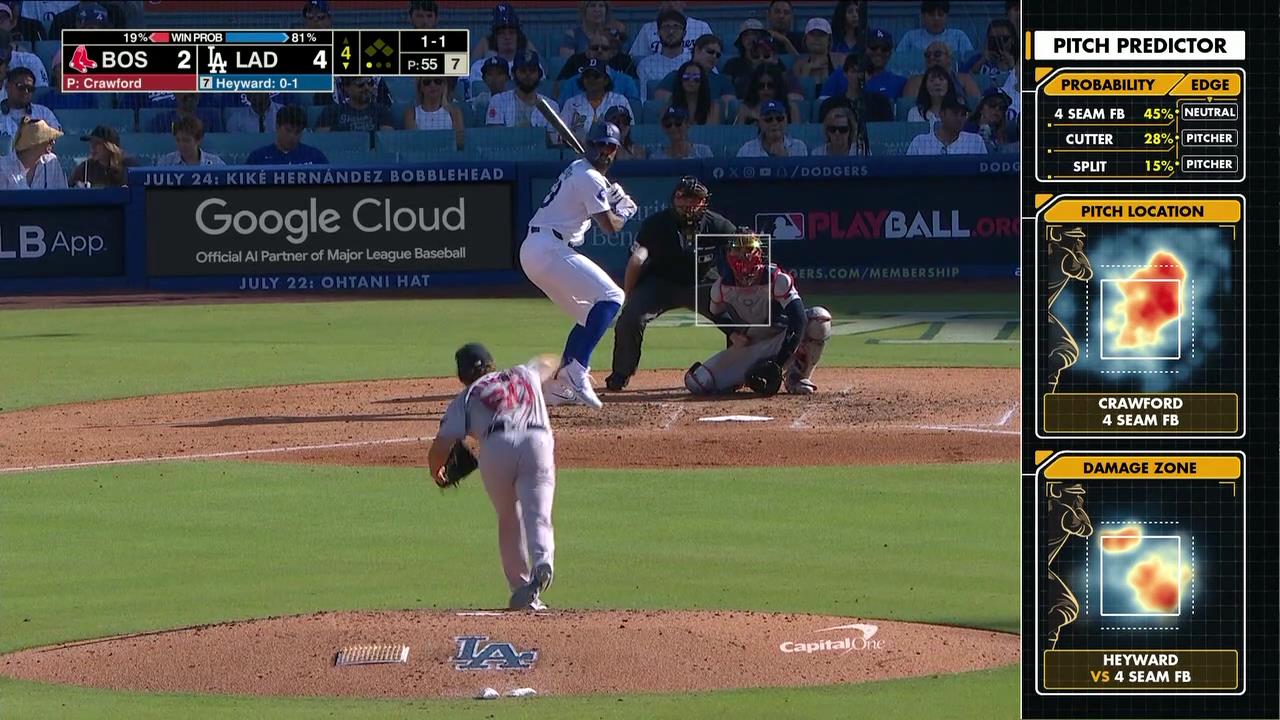How ESPN’s ‘Sunday Night Baseball’ Is Scoring With Tech-Driven, Stats-Based Telecasts (Q&A)
VP of production Phil Orlins shares game plan that is driving 8% viewership gains for MLB telecast

ESPN is successfully pitching its more statistics-heavy and technology-infused coverage of Sunday Night Baseball and its recently launched Statcast alternative telecast to reach younger hard-core and casual fans.
From on-field player interviews from players during its traditional telecasts to the unique, stat-based features on its alternative telecast like “pitch predictor” — which predicts which pitch a pitcher will throw next in any game situation — ESPN is leaning on advanced statistics and unique technology to drive Major League Baseball viewership.
The tech and stats focus has thus far been a hit with viewers. Through July 28, ESPN’s Sunday Night Baseball telecasts have averaged 1.6 million viewers, up 8% compared to a year ago. The July 21 debut of Sunday Night Baseball Statcast Edition — hosted by Kevin Brown, Mike Petriello and Trevor May — captured 11% of the July 21 Los Angeles Dodgers-Boston Red Sox telecast, up from the 9% share averaged by last year’s SNB alternative casts, hosted by Michael Kay and Alex Rodriguez, ESPN said.
ESPN VP of production Phil Orlins spoke to Multichannel News about ESPN’s nuanced approach to its baseball telecasts in 2024. Here’s an edited transcript of that conversation.

MCN: Why has it been important to ESPN to feature more technological and statistical innovations in its baseball coverage?
Phil Orlins: I think that we always aim to be somewhat progressive and lean aggressively towards innovation and differentiation where possible within our Sunday Night Baseball coverage, and it’s been another good year of that. The cooperation and willingness from players in the sport has continued to move in a positive direction, which is great. I think the most noteworthy thing that people talk about is that we’re really in our third year now of doing in-game game interviews with a player on the field during the game. It’s actually become easier as time has gone by. A lot of players have different views on social media as they build their brands, so a lot of them are just comfortable doing it week after week.
MCN: How cooperative has the league been in allowing ESPN to have direct contact with the players during the games?
Multichannel Newsletter
The smarter way to stay on top of the multichannel video marketplace. Sign up below.
PO: Baseball has been willing to change and to take risks across the board. From the rule changes led by the pitch clock to allowing player microphones during the game, they have completely altered the narrative around the sport as a stodgy sport stuck in its historical legacy, to now being a sport that is much more appealing, in a number of ways, to young people.
MCN: How do the Statcast alternate telecasts supplement the traditional Sunday Night Baseball presentation for hard-core fans?
PO: The alt-casts allow us to really do some new and progressive coverage that we haven't done in the past. It allows us to break in some new approaches and things of that nature. It’s totally different from any other alt-cast we’ve ever done. It’s very, very much directed for the most passionate baseball fans and most progressive baseball fans out there. It’s nice when you can build something that’s reasonably aggressive but can also be comfortable for all the viewers. Since we’re clearly targeting a certain type of viewer, it allows us to be unreasonably aggressive.
MCN: Do you worry that all the technological advances will turn off older hard-core fans?
PO: We create content for a vast different type of audience, but you can’t please everybody. We certainly hear that. I don’t think it’s costing us viewers or not making them be fans of the sport, but I’m sure there are people who would rather everything be left alone. We do a lot of research on our different types of audiences, and for the most part, that group would prefer that the commentary be straight and predictable and not have intrusions of any type whatsoever. Then we have an equal or larger group of viewers that we refer to as die-hards who want to know and hear more from the telecasts, and they want more personality and everything about the game. I would say that our decision is almost universally to be slightly more on the progressive side and try to be aligned with where the sport is going versus where the sport has been, but not so much that we alienate traditionalists.
R. Thomas Umstead serves as senior content producer, programming for Multichannel News, Broadcasting + Cable and Next TV. During his more than 30-year career as a print and online journalist, Umstead has written articles on a variety of subjects ranging from TV technology, marketing and sports production to content distribution and development. He has provided expert commentary on television issues and trends for such TV, print, radio and streaming outlets as Fox News, CNBC, the Today show, USA Today, The New York Times and National Public Radio. Umstead has also filmed, produced and edited more than 100 original video interviews, profiles and news reports featuring key cable television executives as well as entertainers and celebrity personalities.

